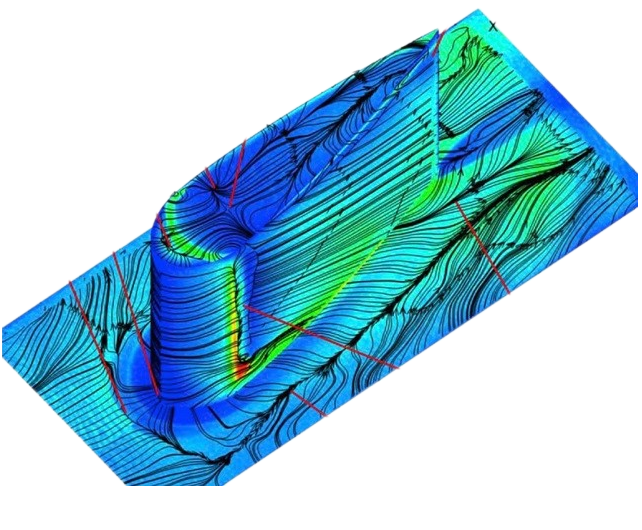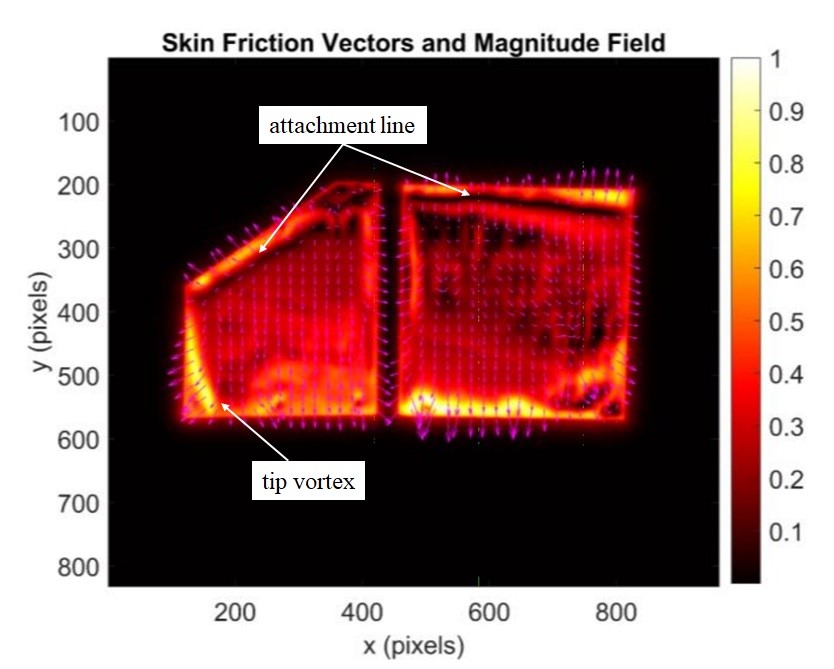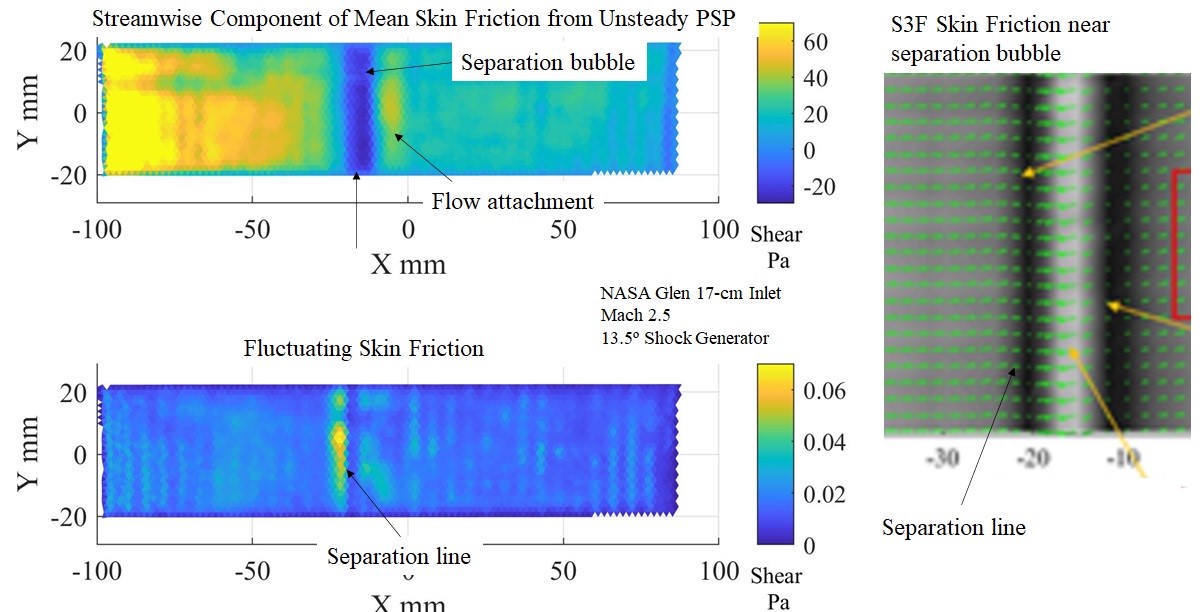Global Skin Friction from PSP and TSP
While skin friction is a key parameter for characterizing fluid flows, it has proven to be a difficult quantity to measure. Existing methods are limited in their ability to provide global measurements of mean and unsteady skin friction.

Current skin friction measurement techniques are limited in their ability to provide accurate and spatially resolved measurements. A new method using Pressure Sensitive Paint (PSP) and Temperature Sensitive Paint (TSP) data and boundary enstrophy flux (BEF) analysis is now being used to overcome these limitations.
Background
Over the last 20 years, efforts haves been made to extract high-resolution skin friction fields using luminescent oil-film, heat transfer, mass transfer, and pressure visualizations on surfaces. The method uses the optical flow equation to relate skin friction to the measured quantities, and can be used to obtain a projected skin friction field at a spatial resolution of one vector per pixel. The result of this method is a relative, not absolute, skin friction field. The absolute skin friction field can be obtained by in-situ calibration using values from a reliable point-based method at one or several locations.
Skin Friction from TSP
The relative skin friction field is derived from the relationship with the surface temperature gradient measured by temperature sensitive paint (TSP) using the Horn-Schunck optical flow equation. This process is shown for TSP measurements of heat transfer on an impinging jet below.

The quantitative accuracy of the anchored data is shown by comparing the TSP skin friction to both hot film and theoretical solutions.
The simple model is valid for steady flows with large spatial surface temperature changes. This type of experimental setup is common for flows with heated surfaces (jet impinging on heated plate), or in high enthalpy blow-down facilities where the temperature change of the model is relatively large.
The successive approximation model is a method for solving complex flows that can be decomposed into a superposition of simpler flows. The model starts with a basic boundary layer flow, and then adds more complex structures to the flow as needed. The limitations of the model depend on the ability of the basic boundary layer flow to accurately describe the main flow. In general, the power-law base flow is a reasonable approximation in boundary layers.
Skin Friction from PSP
The surface pressure gradient field is a less sensitive indicator of separated flows than the shear field. However, the two fields are intrinsically coupled through a vorticity-unsteady mechanism. This coupling can be used to extract skin-friction structures from the surface pressure field.
The coupling relation between pressure and shear is derived from the Navier-Stokes equations, which can be expressed as a balance between pressure and boundary enstrophy flux.
Below, the shear field is extracted using the normalized surface pressure field and corresponding normalized pressure gradient field obtained from PSP on the upper surface of a delta wing.

Acquiring experimental measurements of mean and unsteady pressure or shear on a rotating blade is extremely difficult. Measurements of mean and unsteady surface pressures have been acquired on rotorcraft blades using small arrays of integrated taps or kulite pressure transducers, but this requires construction of expensive custom blades and only produces data at a limited number of locations. Measurements of skin friction in the rotating frame are even more challenging.

Unsteady pressure measurements were conducted on a rotor in forward flight using two single-shot lifetime PSP systems in the 14X22 foot wind tunnel at NASA Langley. The data showed a suction peak at the leading edge of the blade and the presence of the tip vortex.
Unsteady Skin Friction
Experimental measurements that show both mean and unsteady surface flow features such as flow separation and attachment lines would be particularly useful for placement of point sensors as well as aid in the study of aeroelasticity, wing buffet, shock boundary layer interactions, flow control, and validation of computational models.
If the pressure field can be measured at high frequency with sufficient accuracy, it is possible to reconstruct an unsteady skin friction field.

Fast PSP was used to capture unsteady skin friction on a launch vehicle model in a wind tunnel, demonstrating the use of this global skin friction tool in a production wind tunnel. The results showed several regions of separated flow, including a separation bubble at the nose body junction and a separation downstream on the body caused by bumps.

Limitations of PSP Skin Friction Approach
The boundary enstrophy flux (BEF) is a difficult quantity to measure experimentally or model theoretically. However, it can be assumed to be a constant value in regions where the skin friction topology is dominated by the pressure gradient. This assumption can be used to recover a component of the skin friction field that is dominated by the pressure.
